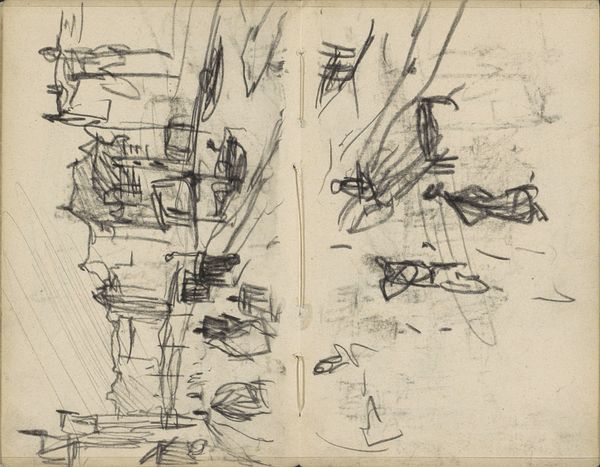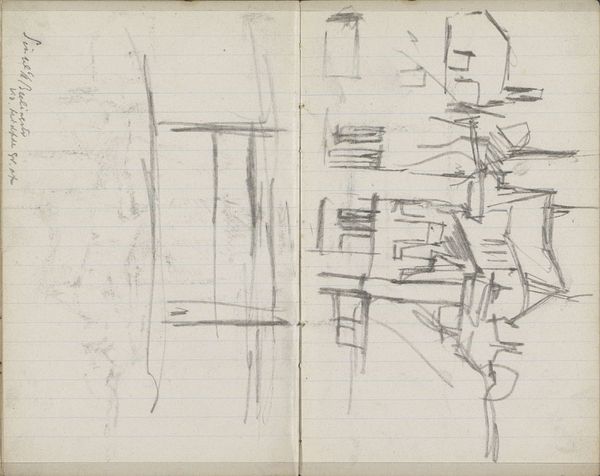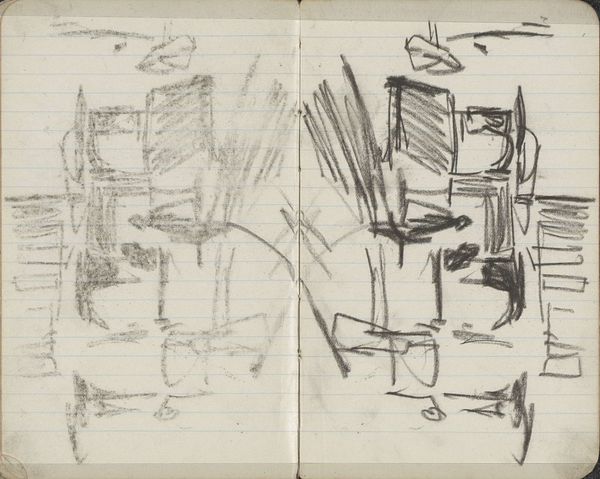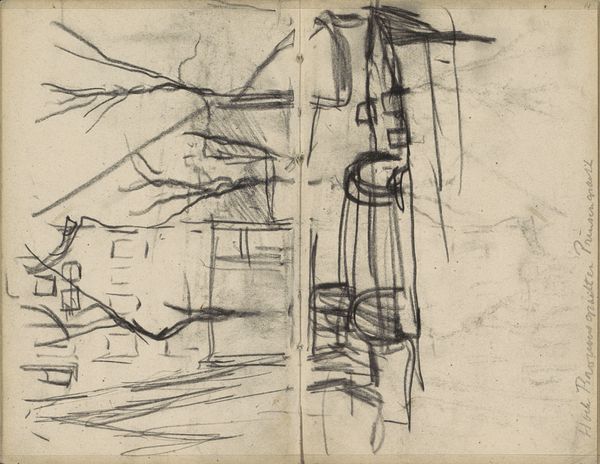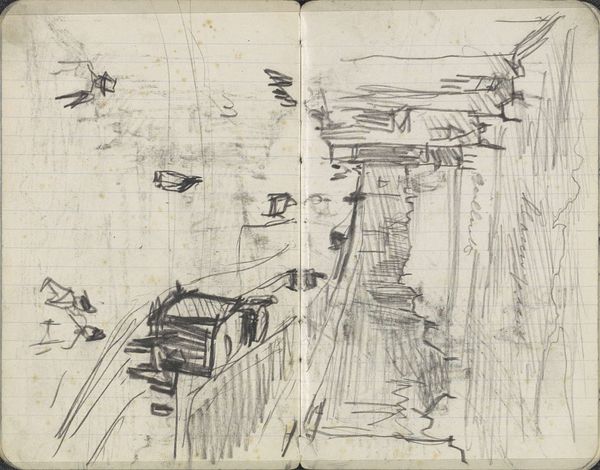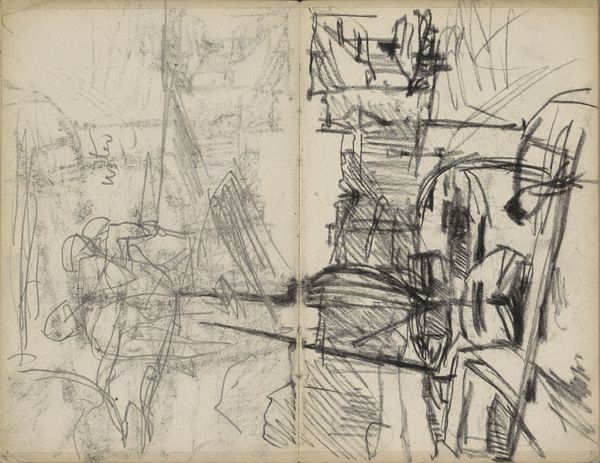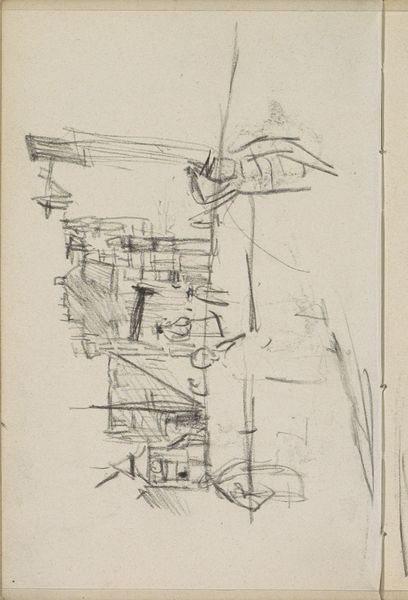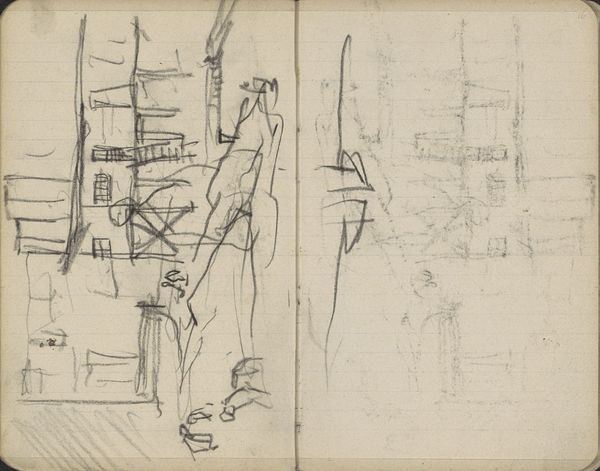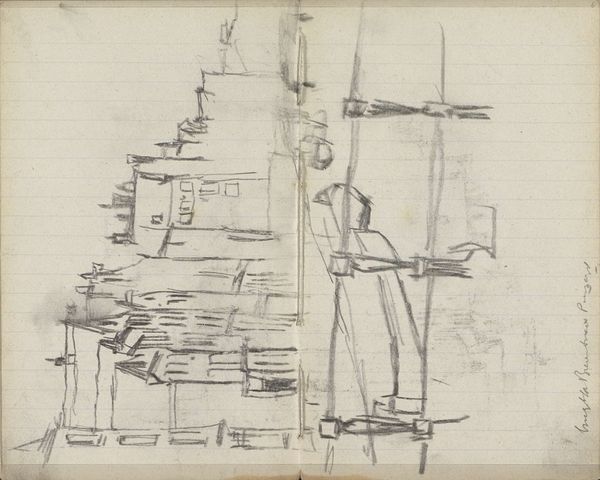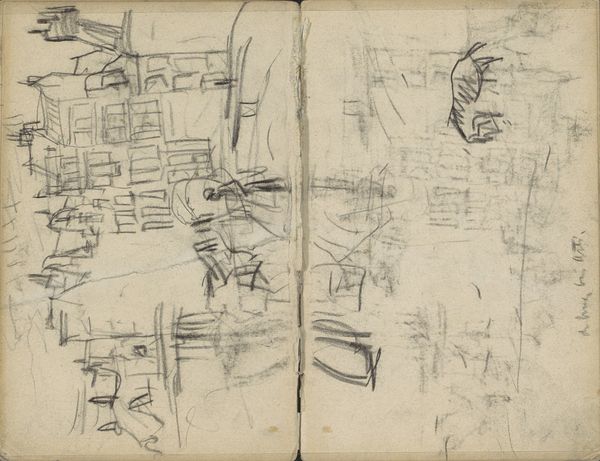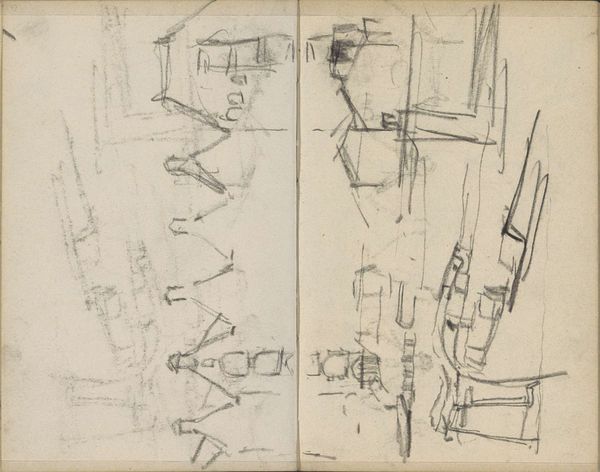
Waspit, mogelijk op de Lauriergracht te Amsterdam 1893 - 1898
0:00
0:00
Copyright: Rijks Museum: Open Domain
Curator: This is George Hendrik Breitner’s drawing, "Waspit, possibly on the Lauriergracht in Amsterdam," created between 1893 and 1898, executed in pencil. What’s your initial response? Editor: It feels like a fleeting moment captured. The rapid, almost frantic lines suggest a scene in motion, the perspective skewed, yet brimming with a raw immediacy. Curator: The sense of 'fleetingness' is vital. Breitner was capturing the everyday. He was very influenced by photography and that influenced his pursuit of instantaneous moments. See how the rapid strokes aim to depict spatial depth as it collapses. Editor: Precisely. But I wonder, who or what is ‘Waspit?' And, if it's a person, is this casually portraying a lived reality of the urban poor or does it have a symbolic purpose, like perhaps invoking class anxieties? Curator: That’s a very insightful question. Breitner, as an impressionist, was concerned less with explicit social commentary than with observing and documenting modern life. The sketchbook functions as a mnemonic device. Editor: A personal one, perhaps. The drawing isn’t particularly polished; we observe lines upon lines. What about the dog-like shape to the bottom right? How can this form be explored or contextualized in relationship to other imagery from Breitner? Curator: Its sketch-like qualities are its essence. The artist lets us witness his gaze unfold. Think of other canids from art history--Cerberus or the black dogs in Goya. Are there elements here that convey an omen? Editor: You see how symbols, however latent, tend to linger. Yet, thinking about form... the figure and the architecture blend so easily as components of urban, everyday existence. Breitner seems intent on equalizing, so to speak. Curator: Indeed, an integration. There are two planes, after all--the conscious observation of Waspit alongside other subconscious impressions the mind forms together to convey both perception and memory. Editor: It really is in process. The lines could form and re-form into different arrangements entirely. Curator: I agree; there’s no firm conclusion. That, I believe, makes it particularly fascinating. It refuses to give easy answers. Editor: An artwork about posing questions more than resolving them, about embracing the complexities inherent to experience and observation... lovely.
Comments
No comments
Be the first to comment and join the conversation on the ultimate creative platform.

